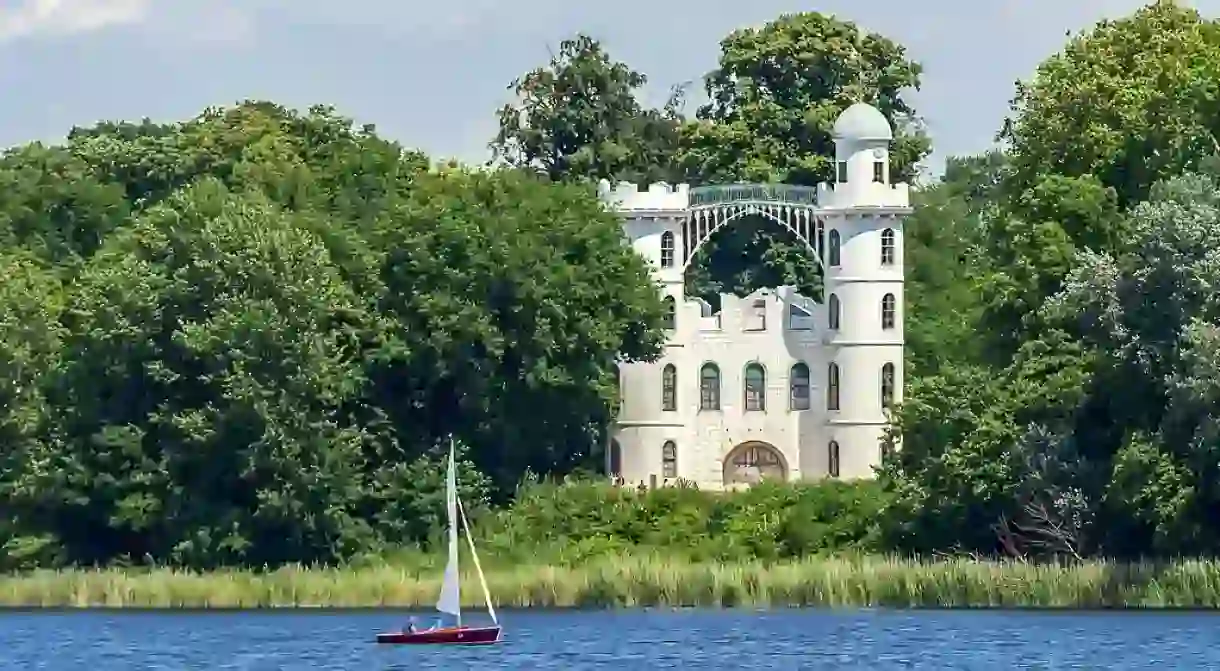Spotlight On Berlin's Peacock Island

Berlin’s Peacock Island is exactly what it sounds like, and more. Called Pfaueninsel in German and located southwest of the city near Potsdam, there are plenty of freely roaming peacocks strutting about this islet on the Havel River. It is a favorite picnicking spot among locals, and many have fond memories of childhood visits to the well-manicured gardens and park that sprawl across the island. Yet, at this point you may be wondering how this whimsical little spot came to be. We are here to help.

Peacock Island is truly a place that belongs in a fairytale where visitors can come and relax amidst the majestic birds as they perch from trees and scurry about. The landscape is pristine, and it has served as a nature conservatory since 1924. Comprised of 67 hectares of land, Pfaueninsel is somewhat of a hidden gem that promises serenity and splendid vistas. The island is only accessible by ferry, which only adds to its enigmatic appeal. The park was designed in the early 19th century in accordance with popular styles of the era by famous Prussian gardener, Peter Joseph Lenné, and it is the perfect place for sprawling out and enjoying a sunny afternoon with friends.
According to archaeological evidence, the island is actually believed to have been populated for thousands of years, but most of what we know about it has transpired in more recent times. The site of a rabbit farm and a glass foundry during the 17th century, the island was later used as the site of Friedrich Wilhelm II’s gardens along with a menagerie for exotic animals inspired by the Parisian Ménagerie du Jardin des Plantes. It was built in 1797, and the stunning white palace known as the Lustschloss was where the king himself would often spend evenings with his beloved mistress, Wilhelmine Encke. The striking palace still marks the island’s silhouette today.

His successor, Friedrich Wilhelm III, expanded the exotic menagerie, and even opened it up to the public. At one time, there were over 900 animals kept in captivity on Pfaueninsel. As the island grew overcrowded with animals and frequent guests, however, the animals were eventually donated to the Berlin Zoo. The closing celebration for the 1936 Olympics was also held here.
Other historic buildings remain on the island as well, including the Meierei Abbey ruins and the Kavalierhaus, set in striking neo-gothic style. In fact, the aesthetics of the island are so evocative that multiple films have been shot here, including The Door With Seven Locks and The Monster of Blackwood Castle.

The island’s gardens still flourish as the backdrop for the island’s splendid inhabitants, the peacocks. Naturally, plenty of other wildlife can also be found on the island in addition to the peacocks themselves, including a range of other birds, frogs, and woodland creatures as well as the majestic water buffaloes, which come to graze here in the summer months.
Located less than an hour by car from the city center, Pfaueninsel still serves as the perfect place for a day trip, where people can come to enjoy a UNESCO World Heritage Site situated right in Berlin’s backyard.













